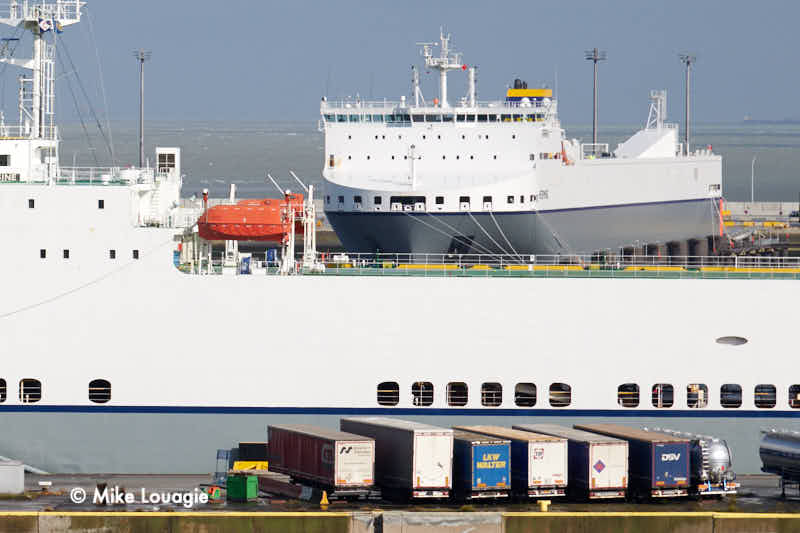HERMINE is yet another newbuilding for CLdN. She started to operate last week from Zeebrugge to the UK. She’s the last unit of a 5,400 lane meter quartet of Hyundai Mipo built roro ships, including LAURELINE, YSALINE and SIXTINE. Before, two larger 8,000 lane meter roro’s were delivered, the CELINE and DELPHINE.
Previously, the order for two vessels at the Uljanik Yard have been cancelled because of the financial problems of the yard.
Instead, in July 2019 CLdN placed an order for an additional two roro’s at Hyundai Mipo. The major difference will be the fact that they will use LNG as fuel.
The two roro’s will have a 320m3 capacity C-type fuel tank, located under the main deck.
The 4+2 delivered roro ships are LNG-ready.
Four more ships will be ordered, as part of a twelve-ship expansion plan.









